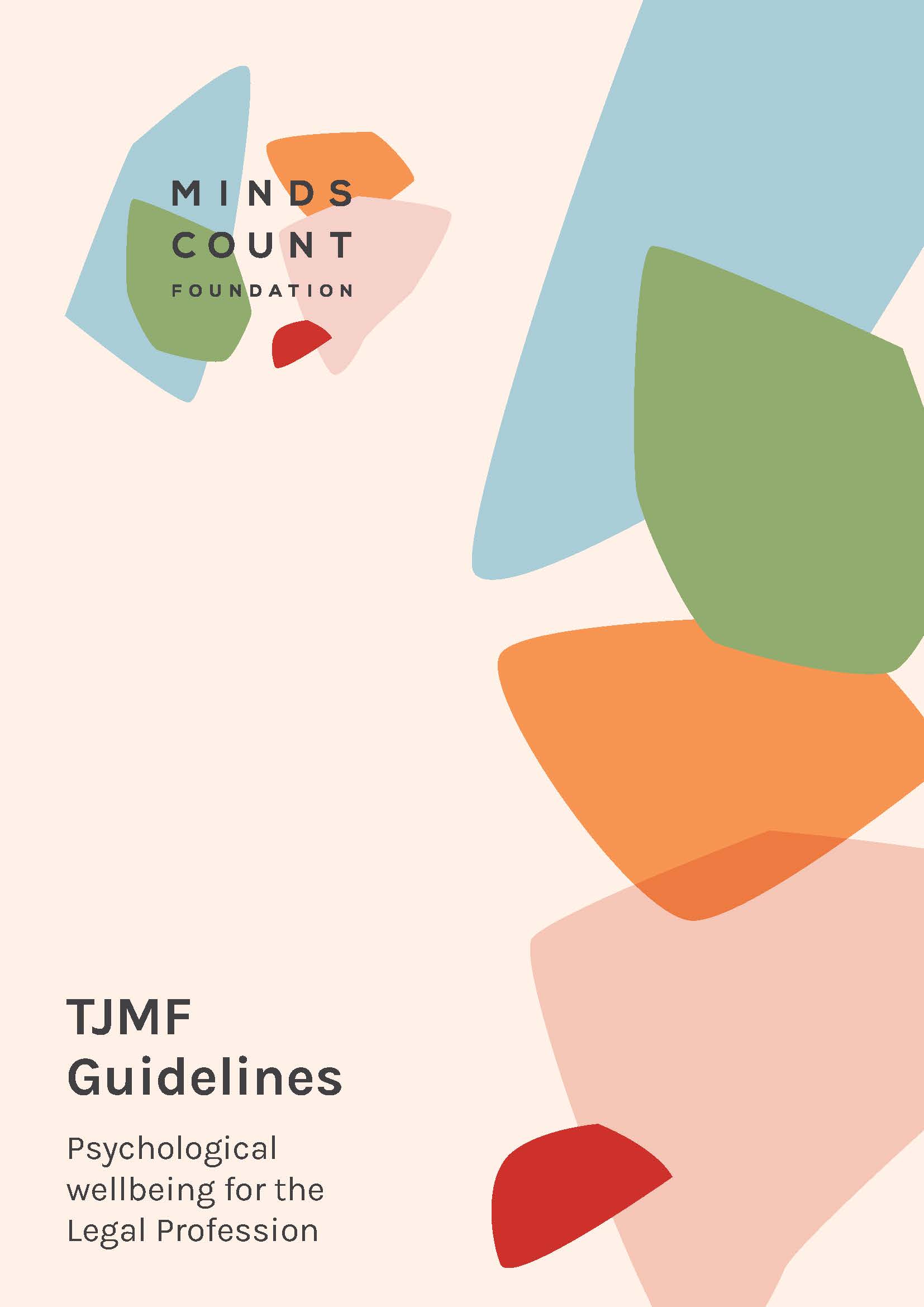The Tristan Jepson Memorial Foundation (TJMF) Best Practice Workplace Wellbeing Guidelines are a free and comprehensive framework for organisations to create a psychologically safe and healthy workplace. The guidelines focus on the prevention of harm through the use of evidence-based approaches and can be used to inform an organisation’s policies, processes and culture towards a psychologically healthy workplace environment.
The Guidelines are intended to support lawyers, law firms and others working within the profession to raise awareness of mental health issues, and to assist in the creation and maintenance of psychologically healthy and supportive workplaces.
The Guidelines were developed through the work of a sub-committee of the Tristan Jepson Memorial Foundation (now the Minds Count Foundation), representing a broad range of people within the legal profession. They build on a range of international and national activities, including the work of the Mental Health Commission of Canada (MHCC), under the auspices of the Canadian Standards Association and the Bureau de Normalisation du Québec (BNQ), and, in Australia, the Mental Health Alliance.
The Guidelines have been adopted across a range of workplaces including courts, tribunals, university law faculties, government departments, community legal centres and law firms ranging from sole practitioners to global corporations. Both legal and non-legal workplaces which uphold the principles and spirit of the Guidelines can become Signatories to the Guidelines. A list of current Signatories to the Guidelines is available here.
Why the TJMF Guidelines are important
It is recognised that all legal workplaces are stressful and it has been shown that legal professionals are disproportionately at risk of suffering from psychological distress and illness.¹
Workplace factors have been proven to contribute to this risk,² causing harm to people’s health and adverse impacts on the organisations that employ them (including absenteeism, ”presenteeism”, staff attrition, and WHS liability risks).
The Guidelines identify a set of 13 workplace factors which significantly shape an individual’s experience of psychological safety and wellbeing at work. Employers should focus on these factors when constructing a psychologically safe workplace environment.
Towards a safer workplace
A psychologically safe and healthy workplace would involve:
Leaders:
- Actively working to prevent harm to the psychological wellbeing of staff
- Taking all reasonable steps to minimise threats to staff mental health
- Ensuring the mental health of their staff is protected
- Promoting the psychological well-being of all staff.
All Staff:
- Feeling confident that it is ‘safe’ to speak up
- Feeling that neither management nor members of their team/colleagues will embarrass, reject or punish someone for speaking up.
Implementation of the TJMF Guidelines
The Guidelines are a voluntary framework which is used by management to construct a healthy workplace. They are free to implement, and can be tailored to each individual workplace, regardless of the size of the organisation. Compliance is not monitored by Minds Count.
Access the TJMF Guidelines
TJMF Psychological Wellbeing: Best Practice Guidelines for the legal profession
Sign up to the Guidelines today |
References
¹ Kelk, NJ, Luscombe, GM, Medlow, S, Hickie, IB (2009) Courting the blues: Attitudes towards depression in Australian law students and lawyers, BMRI Monograph 2009-1, Sydney: Brain & Mind Research Institute.
² Shain, M., Arnold, I. & GermAnn, K. (2012) The Road to Psychological Safety: Legal, Scientific, and Social Foundations for a Canadian national Standard on Psychological Safety in the Workplace. Bulletin of Science, Technology & Society, 32 (2) 142-162, SAGE Publications.

